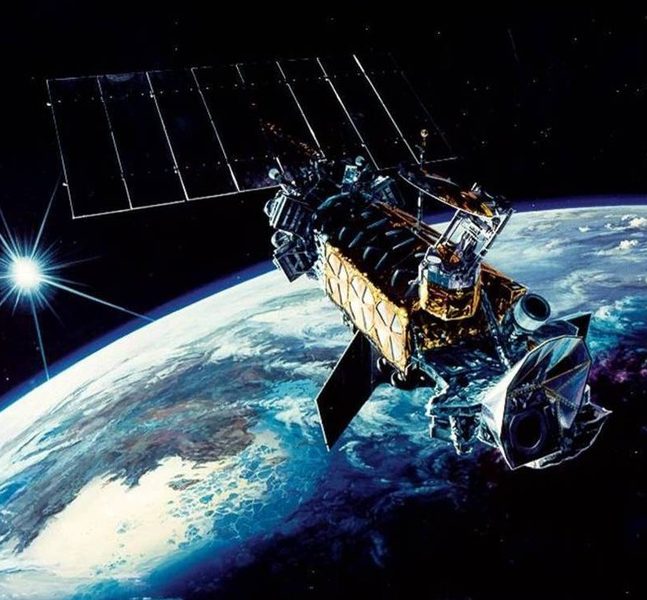Up-to-date information on the weather is important for many people’s jobs. For the Air Force and the broader U.S. military, it can be absolutely critical.
“Small thunderstorm cells can form, dump hail, create a microburst on the ground, and then collapse all within 30 minutes. I’ve seen it happen in Iraq and Afghanistan, that’s a problem,” Air Force Director of Weather Col. Patrick C. Williams said during an event by the Mitchell Institute Aerospace Studies on Nov. 20. “In the Middle East, they ended up with a brown-out condition where they couldn’t see anything. We had a Blackhawk go down in the Middle East, as a result of that. Medevac rescue could not make it in time because they had to wait for that frontal windstorm to pass.”
Key to formulating that weather information are a small number of satellites from the Defense Meteorological Satellite Program (DMSP)—which dates back 60 years. Now, there is an urgent need for an improved space-based environmental monitoring (SBEM) system to replace DMSP architecture.
Satellite images play a crucial role in offering real-time data on how clouds form, disperse, and move. But the Pentagon’s current satellite infrastructure is struggling meet the demand for constantly refreshed and updated information, observers have noted.
Currently, there are only a few DMSP satellites left, the last of which launched in 2014.
“One satellite isn’t enough to give us enough of a refresh rate,” Williams said, stressing the importance of timely, accurate data for both the Air Force Weather team and broader warfighting efforts.
It’s not just ground operations that need weather information—Williams cited another example of electrically-charged weathers cells wreaking havoc on remotely piloted aircraft (RPAS), causing turbulence and operational challenges.
“Forecasting becomes a problem when you can’t have eyes on all the time,” Williams added.
Accurate forecasting requires technology to know what the weather will be like in the next 24 hours for operational purposes, along with detailed, hour-by-hour analysis of weather changes for tactical decision-making.
“The impacts to SBEM systems—or the lack thereof—really impact more than just the Department of the Air Force. It really impacts global operation,” Williams said.
Tim Ryan, senior resident fellow for the Mitchell Institute for Aerospace Studies, released a policy paper earlier this month highlighting the need to accelerate replacements for DMSP. In it, he highlighted the importance of new programs such as Electro-Optical/Infrared Weather Systems (EWS) and Weather Satellite Follow-on Microwave (WSF-M), slated to start coming online in the next few years.
Ryan also argued it is essential to develop a plan for SBEM to ensure its long-term effectiveness.
Lt. Col. Joseph L. Maguadog, materiel leader for EO/IR Weather Systems at the Space Force’s Space Systems Command, said at the Mitchell Institute event that SSC is working to enhance its SBEM capabilities through a combination of modernization and collaboration with partners.
The command’s plan involves using several groups of satellites, with two in low Earth orbit (LEO) and one in geosynchronous (GEO) orbit. These satellites will collaborate to ensure the right sensors are available when needed, with refresh rates tailored for strategic, operational, and tactical commands.
“We’re pivoting that mission area to an increasingly disaggregated, peripheral, and ultimately a more resilient architecture that aligns to our CSO’s vision,” Maguadog said.
The goal is to drive towards a “smaller and cheaper capability,” Maguadog said, while ensuring the operational community’s needs are met.
“There is a family of systems that we heavily rely on with our partners,” Maguadog added, referring to partners including NOAA, the European Meteorological Agency, the Japan Meteorological Agency. “The only way that we are going to deliver the refresh rates that our DOD operators need today, is to continue to work within that family of systems.”
Still, risk remains to the Space Force’s acquisition programs, Maguadog said, stressing the importance of staying in touch with industry partners.
“It’s incumbent upon the program managers to try to anticipate as much risk as possible,” Maguadog said. “And I can’t emphasize enough how important is the success of this program to meet those timelines, as we are so reliant on our industry partners that are literally cranking the wrenches and building these never-before-seen, next-generation sensors.”
